SPECIAL operations forces have come to rely on the "plus or minus 30 seconds" guarantee of the 160th Special Operations Aviation Regiment: the ability to be on target anywhere in the world within 30 seconds of the desired time.
The elite aviation unit is home to the Army's best helicopter pilots. Known as the "Night Stalkers" for their skills flying with night-vision equipment and infrared devices, the pilots and crews of this elite unit excel in navigating through enemy territory and foul weather.
Using the cover of nightfall and keeping low to the ground to avoid detection, the 160th SOAR specializes in getting special operations forces safely into some of the most dangerous places in the world, whether in an enemy's backyard or a mountain hideout.
Since their formation nearly 30 years ago, the Night Stalkers have compiled an unparalleled track record of successfully inserting and exfiltrating special operations forces. The unit has served in almost every U.S. conflict around the world, conducting critical missions extreme in nature and often classified. Missions include airborne command and control, resupplying special operations units, search and rescue, escape and evasion activities and fire support. The unit has developed new tactics, techniques and procedures that often migrate to other Army aviation units, thus contributing to the overall increase in aviation capabilities.
The regiment has four battalions, two based at Fort Campbell, Ky., one at Hunter Army Airfield, Ga., and one at Fort Lewis, Wash. They operate a variety of helicopters including MH-60 Black Hawks, MH-47 Chinooks, MH-6 Little Birds, and their assault configuration, the AH-6. The SOAR's newest aircraft include the SOF version of the Chinook heavy transport helicopter, the MH-47G, and the newest version of the Black Hawk utility helicopter, the MH-60M.
These high-performance aircraft are highly modified, often equipped with expanded fuel tanks and capable of in-flight refueling for long-range operations. That endurance proved a crucial capability in 1988, when two MH-47 crews reportedly flew 490 miles deep into the disputed zone between Chad and Libya to retrieve a crashed Mi-24 Hind medium-attack helicopter. The following year the Night Stalkers spearheaded Operation Just Cause in Panama, successfully executing long-range insertions to seize Torrijos and Tocumen airports and Rio Haro Airbase.
Since October 2001, Soldiers of the 160th have been continuously engaged in combat in the U.S. Central Command area of operations, flying from multiple locations in Afghanistan and Iraq. The crews also provide active support to the U.S. Southern and Pacific commands.
While the 160th SOAR has a high demand for experienced pilots, the selection process for joining this elite unit is tough and the training is rigorous. The extensive flying produces crews ready to operate with confidence and precision in all environments, day and night, on the toughest missions. As they often fly low over water as well as land, Night Stalkers use a special pool in Fort Campbell to train on how to exit a downed helicopter in a body of water.
Tight-knit and proud, the members of this Army special operations unit live up to their motto, "Night Stalkers never quit."
CREED OF THE NIGHT STALKERS
LIKE the Rangers, the members of the 160th SOAR have defined their warrior outlook with a set of creeds. The timeless nature of each speaks to this elite unit's sense of duty, fearlessness and professionalism in action.
Service in the 160th is a calling only a few will answer for the mission is constantly demanding and hard. And when the impossible has been accomplished, the only reward is another mission that no one else will try. As a member of the Night Stalkers, I am a tested volunteer seeking only to safeguard the honor and prestige of my country, by serving the elite Special Operations Soldiers of the United States.
I pledge to maintain my body, mind and equipment in a constant state of readiness for I am a member of the fastest deployable Task Force in the world-ready to move at a moment's notice anytime, anywhere, arriving time on target plus or minus 30 seconds.
I guard my unit's mission with secrecy, for I volunteered to be up front where the fighting is hard. I fear no foe's ability, nor underestimate his will to fight.
The mission and my precious cargo are my concern. I will never surrender. I will never leave a fallen comrade to fall into the hands of the enemy and under no circumstances will I ever embarrass my country.
Gallantly will I show the world and the elite forces I support that a Night Stalker is a specially selected and well-trained Soldier.
I serve with the memory and pride of those who have gone before me for they loved to fight, fought to win, and would rather die than quit.
MH-6 LITTLE BIRD
THE MH-6 Little Bird, and its attack variant, the AH-6, are used for Army Special Operations aviation. Originally based on a modified OH-6A, the newest version is based on the MacDonnell Douglas 530F and has a single, six-bladed main rotor and four-bladed tail rotor.
The MH-6 Little Bird is a single-engine light utility helicopter that has been modified to externally transport several combat troops and their equipment. It is capable of conducting infiltrations, exfiltrations and combat assaults over a wide variety of terrain and environmental conditions. The MH-6 is also used for reconnaissance missions.
The aircraft proved nimble enough to operate in close-support of ground forces, therefore a modified version, the AH-6, was designed for light strikes against aggressor targets. The light-attack aircraft has a single-turbine engine and dual-flight controls. It is primarily employed in close-air support of ground troops, target destruction raids and armed escort of other aircraft. The AH-6 is normally flown by two pilots.
MH-6 Mission Equipment
Aca,!Ac External Personnel System mounted on each side of the aircraft.
Aca,!Ac Rapid configuration for fast rope and short tactical airborne operations.
Aca,!Ac Systems to assist the crew in identifying enemy positions.
AH-6 Mission Equipment
Aca,!Ac Satellite communications and other communications equipment capable of secure operations, including UHF and VHF modes.
Aca,!Ac Forward Looking Infrared surveillance system detects long wavelength radiant infrared energy emitted, naturally or artificially, by any object day or night.
Aca,!Ac Capable of mounting a variety of weapons systems, including both M-134 mini-guns and rocket pods.
Aca,!Ac Crew: pilot and co-pilot
Aca,!Ac Capacity: six passengers for MH-6s
Aca,!Ac Length: 32.6 ft.
Aca,!Ac Height: 9.8 ft.
Aca,!Ac Rotor diameter: 27.4 ft.
Aca,!Ac Maximum speed: 152 knots
Aca,!Ac Cruise speed: 135 knots
Aca,!Ac Range: 232 nautical miles at 5,000 ft.
Aca,!Ac Service ceiling: 18,700 ft.
Aca,!Ac Rate of climb: 2,061 ft./min.
Aca,!Ac Guns: One 30 mm M-230 chain gun; or two .50-caliber GAU-19; or two 7.62 mm M-134 mini-gun
Aca,!Ac Rockets: Two 70 mm Hydra 70 rocket pods
Aca,!Ac Missiles: Two TOW anti-tank missiles or Stinger anti-air missiles.
<B>MH-47 CHINOOK</B>
THE MH-47 Chinook helicopter is the 160th Special Operations Aviation Regiment's long-distance, heavy-lift helicopter which conducts overt and covert infiltration, exfiltration, air assault, resupply and sling-load operations over a wide range of environmental conditions. The aircraft can perform a variety of other missions including shipboard, platform, urban, water, parachute, forward arming and refueling point, mass casualty, and combat search and rescue.
Using special mission equipment and night vision devices, MH-47 aircrews can operate in hostile mission environments over all types of terrain at low altitudes during periods of low visibility and low ambient lighting conditions with pinpoint navigation accuracy.
Based on operational experience in Afghanistan, the MH-47 was found to be an effective substitute for the MH-60 Black Hawk as an assault helicopter. With its larger payload, range, and higher operating speed, one Chinook can replace up to five MH-60s in this role as an air assault transport.
Aca,!Ac Crew: 3; pilot, co-pilot and flight engineer
Aca,!Ac Capacity: 33-55 troops or 28,000 pounds of cargo
Aca,!Ac Length: 98.8 ft.
Aca,!Ac Height: 9.8 ft.
Aca,!Ac Rotor diameter: 60 ft.
Aca,!Ac Maximum speed: 170 knots
Aca,!Ac Cruise speed: 130 knots
Aca,!Ac Range: 400 nautical miles
Aca,!Ac Service ceiling: 18,500 ft.
Aca,!Ac Rate of climb: 1,522 ft./min.
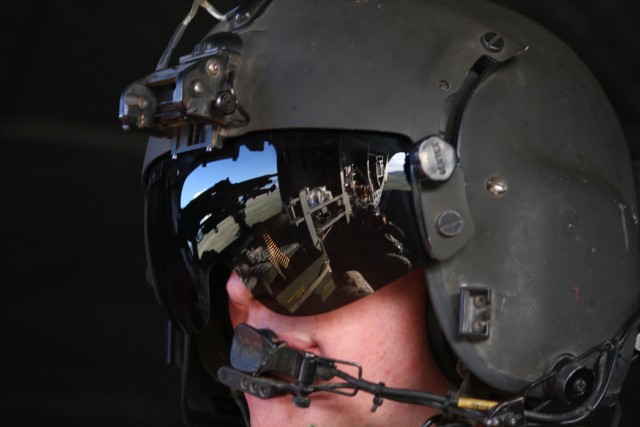
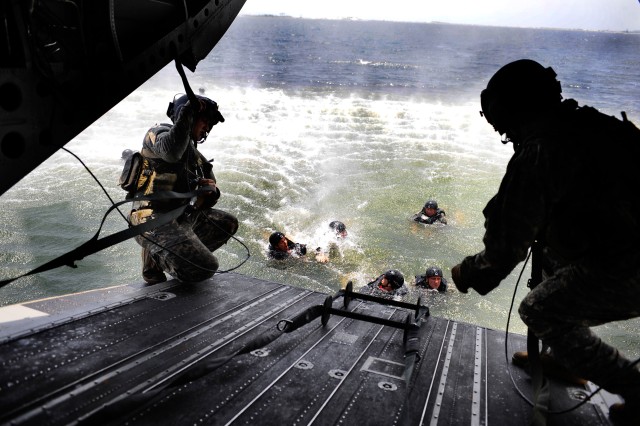
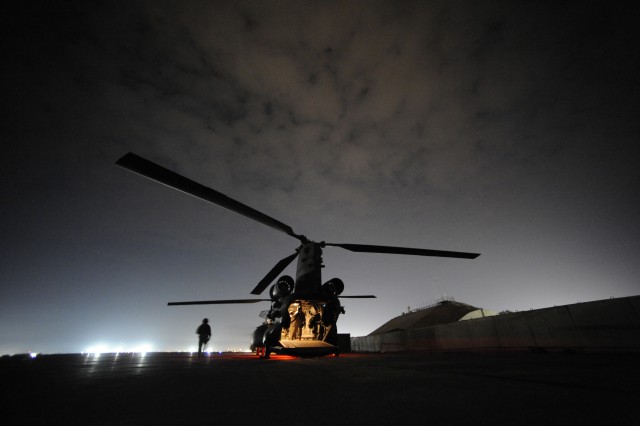
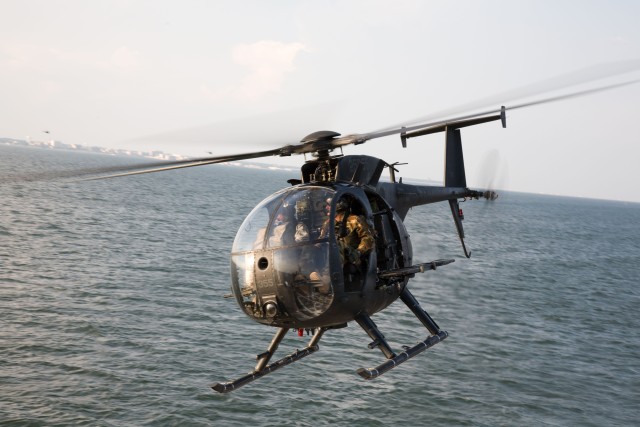

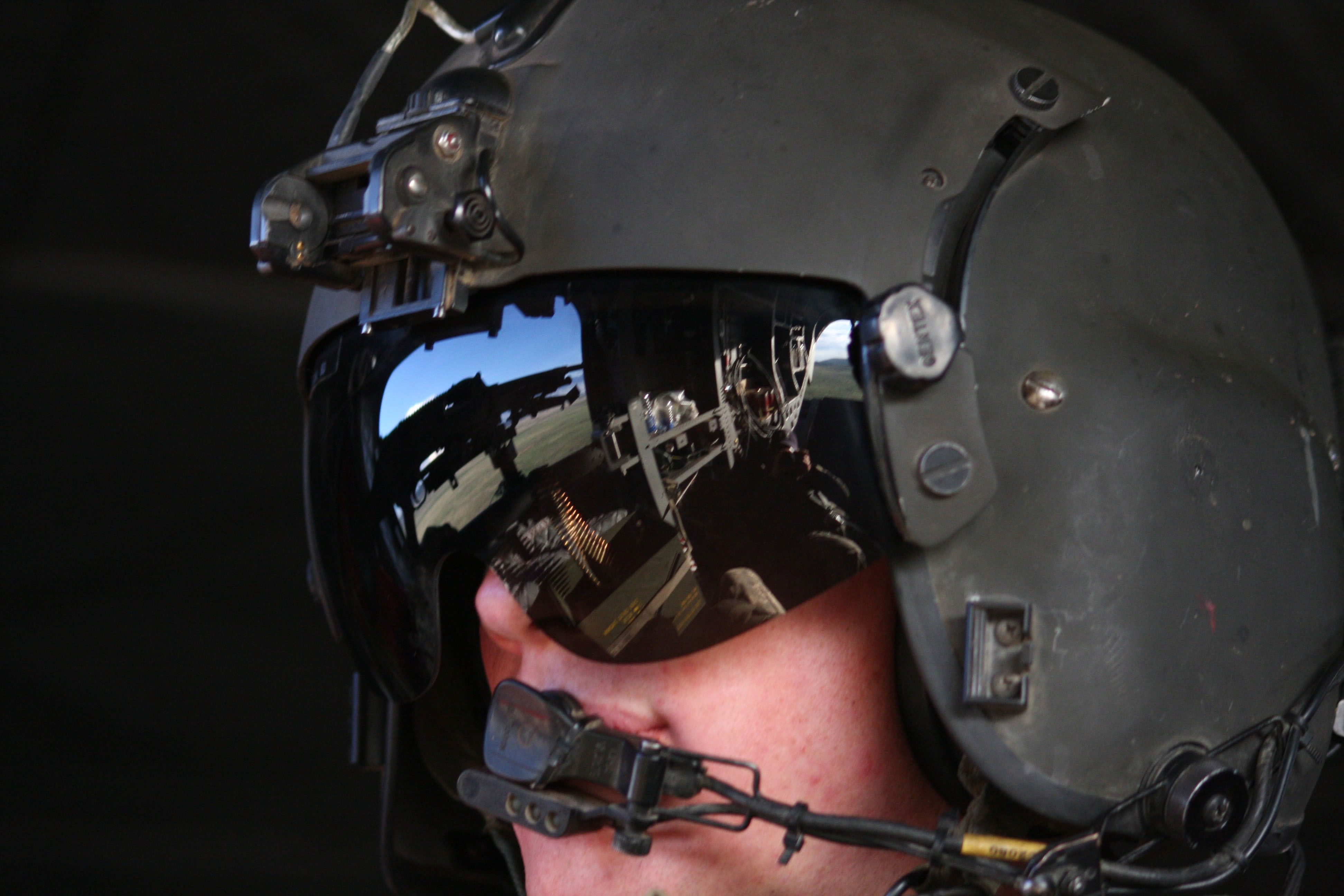


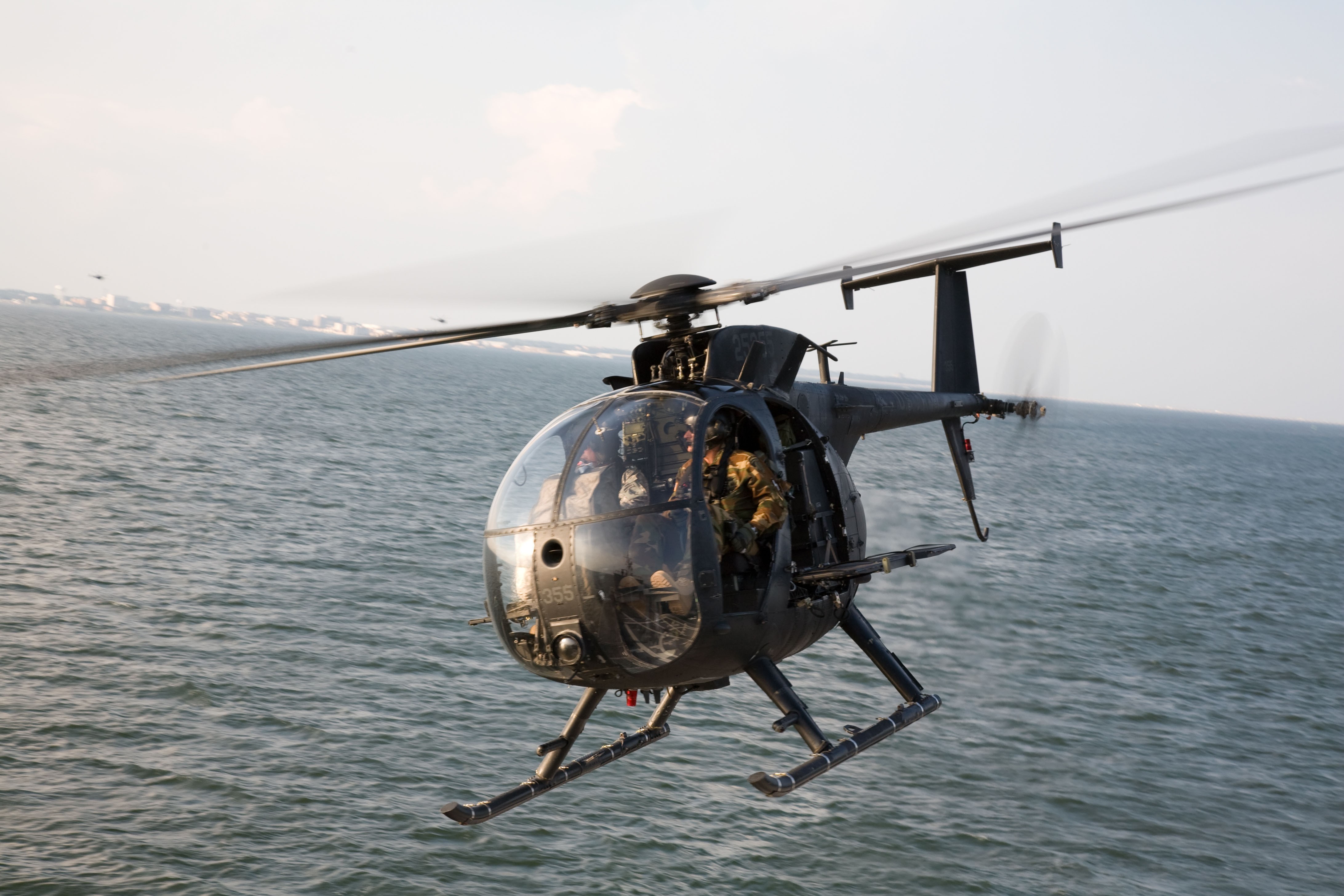

Social Sharing